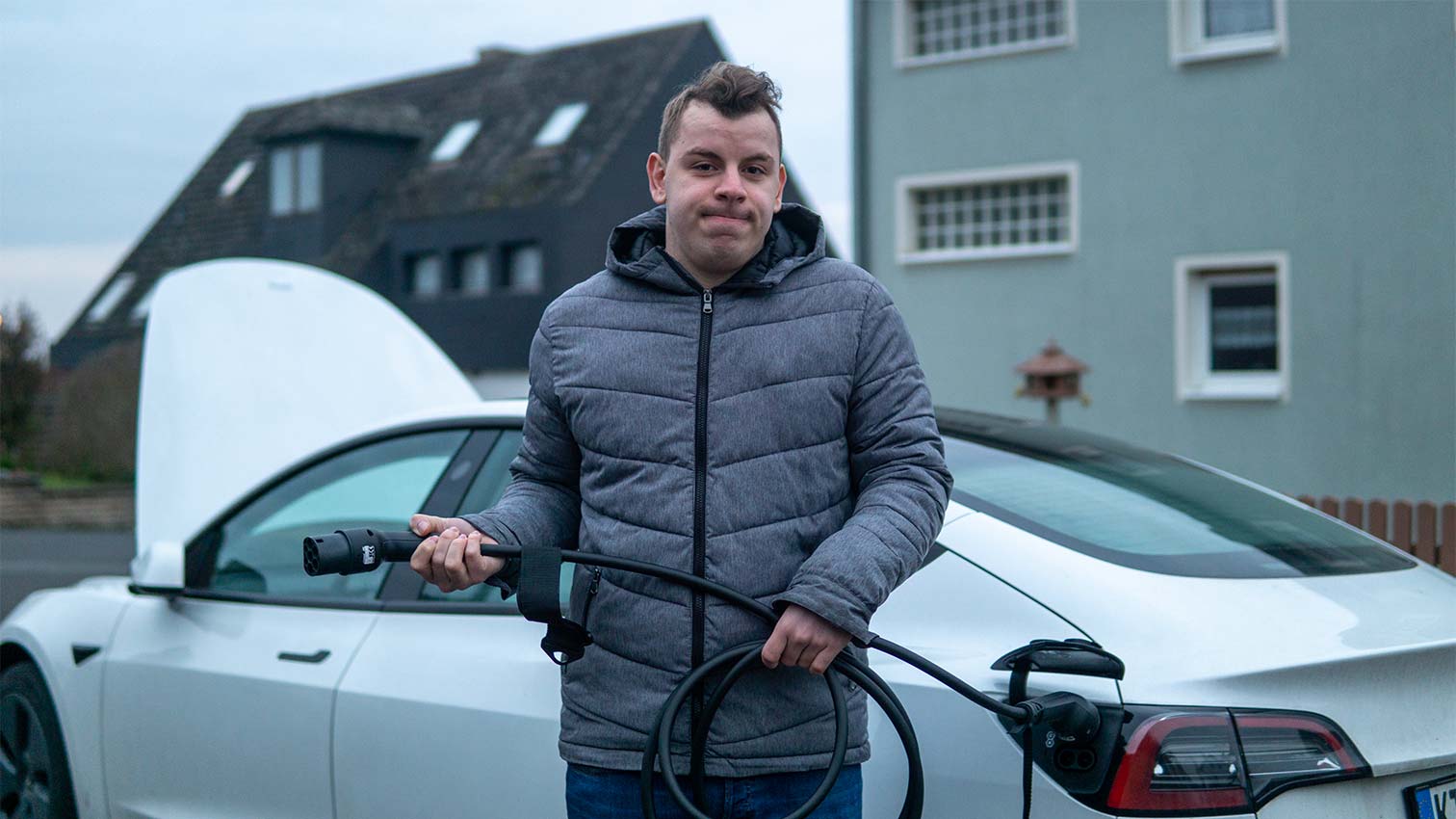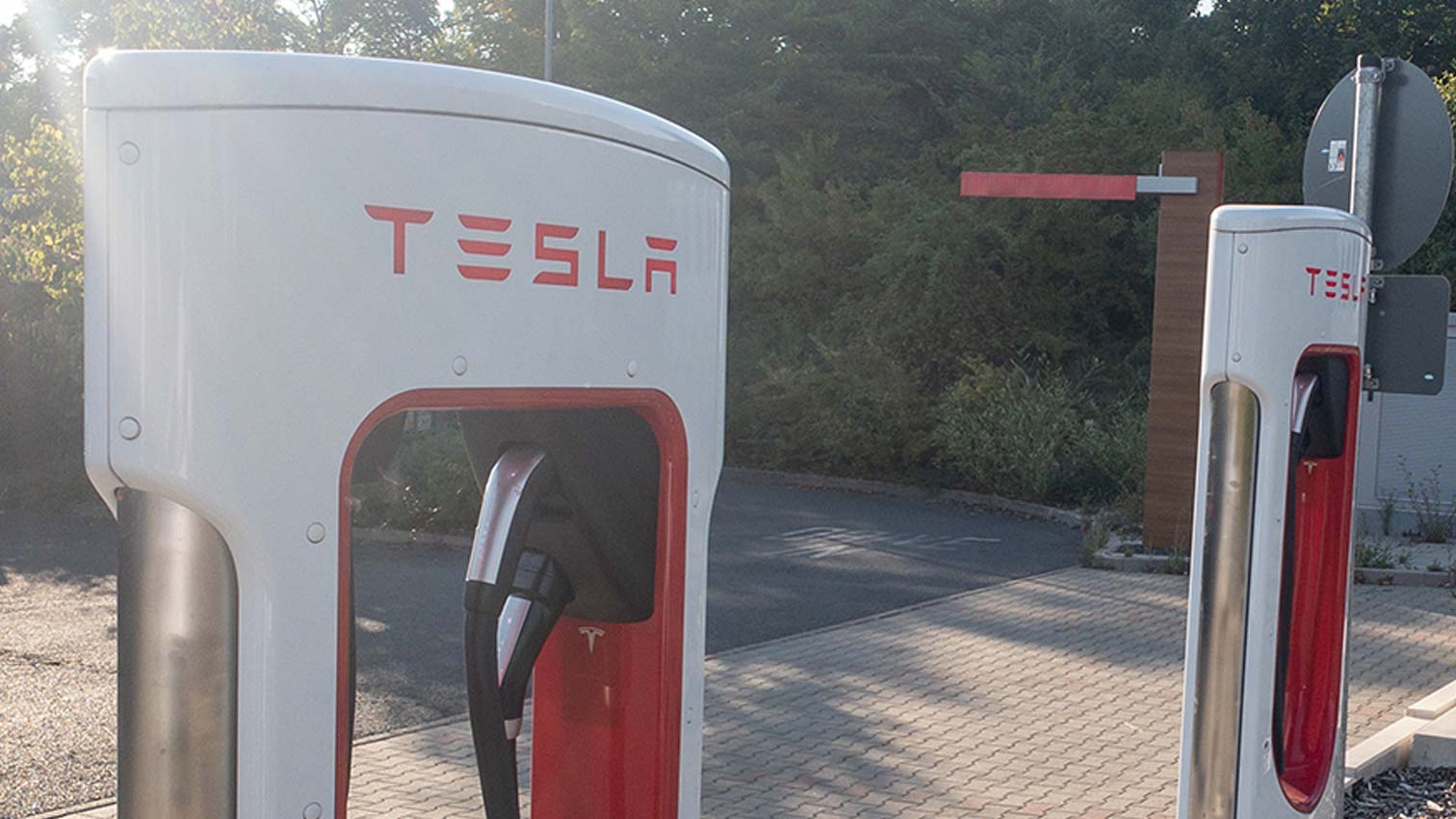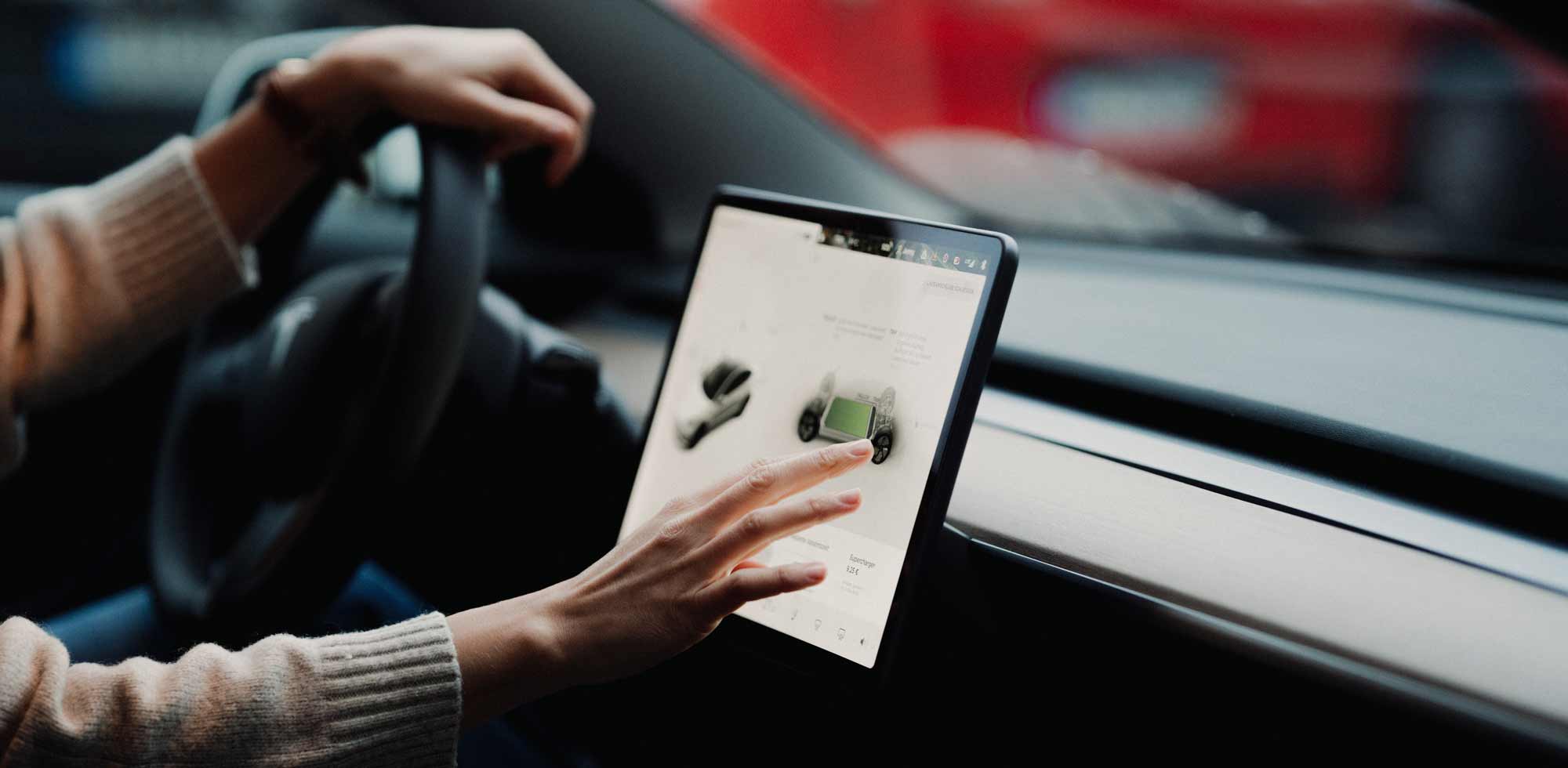Wondering what the Tesla towing capacity of the Model 3, Y and co. is? Find out here!
E cars were long considered unsuitable for use with trailers and were therefore often delivered without towbars. The loss of valuable range was too great, especially with large and heavy trailers such as caravans or aerodynamically unfavorable constructions such as bicycle racks.
However, trailers are not always used on long vacation trips: Sometimes you just want to take green waste to the recycling center or transport the bulk purchase home from the nearest DIY store. How much range you lose on these short trips is usually not worth mentioning.
In addition, the charging network is now well developed and vehicles are charging faster and faster. This means that range is no longer such an important argument, even on longer journeys.
Tesla towing capacity: Almost every model with trailer hitch
These reasons are probably one of the main reasons why Tesla now offers a trailer hitch for almost every one of its models, albeit usually as an optional extra. The company has recognized that there is also a need to tow trailers with electric cars.
Almost anyone who buys a Tesla can meet this need today. However, the possible towing load differs significantly in some cases. In this article, we explain everything you need to know about towing capacity and driving with a trailer for the individual Tesla models.
Tesla Model 3 towing capacity: Even the smallest can tow trailers
As the manufacturer's smallest model, the Tesla Model 3 is perhaps the car you would least imagine towing a large trailer. But as I said, even a light trailer can sometimes be quite practical in everyday life. And that's exactly what the Model 3 is suitable for.
Those who select the optional trailer coupling when purchasing the vehicle - according to Tesla, it cannot be retrofitted - will receive a maximum towing capacity of 1,000 kilograms (braked). The unbraked towing capacity is the legal maximum of 750 kilograms. Tesla specifies a maximum drawbar load of 100 kilograms. Older models (built up to 2021) have a towing capacity of 910 kilograms and a drawbar load of 91 kilograms.
If you want to use the trailer hitch of the Model 3 for a bicycle rack or similar superstructures, please note the following: The maximum for such vertical loads is usually 55 kilograms, but anyone driving 20-inch wheels and carrying more than two occupants will only have 20 kilograms available.
The price for the Tesla Model 3 trailer package is currently €1,350. Interestingly, it is not available for the Model 3 Performance, making the high-performance version the only Tesla for which a trailer hitch is not currently available.
To summarize: With the trailer hitch, Tesla creates the possibility of towing smaller trailers or transporting two to three bicycles in the non-performance models of the Model 3. However, larger loads such as caravans or boats are generally not possible with the smallest Tesla.
Tesla Model Y towing capacity
The Model Y crossover SUV is larger and heavier than its "little brother", the Model 3. Accordingly, it can also tow larger loads and is more likely to be suitable for large trailers.
However, the following also applies to the Model Y: The trailer coupling is optional and must be selected at the time of purchase. If you buy the trailer package, you can tow up to 1,600 kilograms (braked) or 750 kilograms (unbraked) with your Model Y. As with the Model 3, the maximum drawbar load is 100 kilograms.
The Model Y can not only tow more, its trailer hitch is also better suited for vertical loads such as bicycle racks: the maximum is 72 kilograms, this value only shrinks back to 20 kilograms with 20-inch wheels and more than two occupants.
Tesla charges €1,350 for the installation of a trailer hitch on the Model Y. The good news is that the trailer package is available for all variants, including the Model Y Performance.
As expected, the Model Y pulls more than the Model 3; with 1.600 kilograms, even one or two caravans are no longer a problem.
Tesla Model X towing capacity
If you want to tow even heavier loads with a Tesla, you have to choose the Model X. The largest and heaviest Tesla also offers the highest towing capacity.
The Plaid variant has a maximum towing capacity of 2,250 kilograms (braked), with a maximum drawbar weight (drawbar load) of 90 kilograms. According to the manual, the maximum towing capacity for the Long Range models available at a later date will be 2,300 kilograms and the drawbar weight 100 kilograms.
Interestingly, the limit for vertical loads on the Model X is 54 kilograms, which is less than what the Model Y can carry. However, in this case there is no indication that this value decreases with certain rim/occupant combinations.
The special feature of the Model X: the trailer package is already included in the price, at least in the Plaid version, and does not have to be paid for separately. It remains to be seen whether the trailer hitch will also be standard in the Model X Long Range.
Conclusion: With the towing capacity of the Model X, even large trailers, boats and caravans are generally no longer a problem; sufficient power is available anyway.
Tesla Model S towing capacity
In principle, the Model S would also have enough power for large trailers. Its weight of over two tons would also make a lot possible in terms of towing capacity. Unfortunately, Tesla does not allow this: owners of the luxury sedan have to make do with a braked trailer load of 1,600 kilograms, and the permissible drawbar load is also 100 kilograms. These values apply to all variants of the Model S.
As with the Model X, the Model S can carry a maximum of 54 kilograms of bike racks and other vertical loads. This means that the Model Y with its 72 kilograms is actually the most resilient or most useful vehicle in this respect.
A special feature of the Model S: although the basic construction for a trailer coupling is installed in every vehicle at the factory, the coupling itself must be purchased separately. It cannot currently be selected when ordering, but must be purchased later. Cost point for this: 790 euros.
For a normal-sized caravan or smaller trailer, the Model S is also suitable. If you regularly need more, you have to go for the Model X. After all, the financial difference is not too great, especially as the trailer package is included in the Model X.
Less Tesla range with trailer
But why are the towing capacities of Tesla and electric vehicles in general lower than those of combustion engines? After all, the fact is that even the Model X, with its 2,300 kilogram towing capacity, lags behind similarly sized combustion SUVs.
The reason for this is the sometimes enormous loss of range, depending on the trailer. If you tow 2,300 kilograms on your Model X, you have to pull almost twice the weight. In addition, trailers are usually not really aerodynamic and therefore increase the air resistance of the combination enormously. Both of these factors have a noticeable impact on fuel consumption and therefore on range. Depending on the trailer, this can be reduced by up to 50 percent.
In principle, combustion engines also have this problem - their consumption also increases with higher mass and higher air resistance. However, range traditionally plays a much more important role for electric cars than for combustion engines. With this in mind, it seems only sensible that Tesla and other e-car manufacturers are limiting the options for trailer operation so as not to put too much strain on the range.
At the same time, the increasing towing capacity of e-vehicles shows that the industry is slowly but surely moving away from the burdening range stigma.
With trailer: observe maximum speed
However, this stigma has not yet been completely overcome; range is still an important argument. So if you want to limit your loss of range despite towing a trailer, you should keep your consumption as low as possible by adopting a passive driving style. This includes, above all, avoiding high speeds. In any case, you are only allowed to drive at a maximum of 80 km/h with a trailer outside built-up areas. If the trailer meets certain requirements, this limit can be raised to 100 km/h on freeways and dual carriageways - but no more is possible under any circumstances.
While you won't get anywhere near as fast as usual at these speeds, at least fuel consumption remains within reasonable limits despite the trailer.
Conclusion: Tesla towbar is worth it despite the extra charge
Even if the trailer package has a surcharge, it will be worth it for many buyers. Such helpful gadgets will make your Tesla experience instantly better.
You can find accessories for Model Y and other models at Teslabs for more comfort and better protection.
Unlike in the early days of Tesla, towing a trailer with an electric car is now possible. With most Tesla models, you don't have to hide at the recycling center or on a vacation trip with a caravan.
Driving with a trailer is always at the expense of range. But with today's battery capacities, an adapted driving style and the well-developed Supercharger network, this is no longer too much of a challenge.




